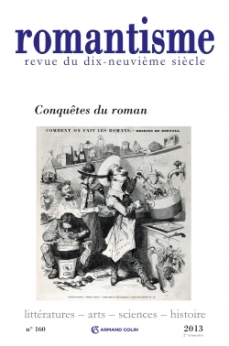
Romantisme n° 160 (2/2013)
Pour acheter ce numéro, contactez-nous
Recevez les numéros de l'année en cours et accédez à l'intégralité des articles en ligne.
La rencontre de l’improper et de l’argent permet de tracer une courbe tout à fait intéressante par ses propriétés dialogiques. Cette courbe part de Rome, Naples et Florence (1826) de Stendhal et vient aboutir à La Maison Nucingen de Balzac. Ce sont ici deux cerveaux, deux textes, deux nomenclatures, deux discours qui se répondent, se complètent et se corrigent l’un l’autre. Pour le Voyageur qui parcourt l’Italie, l’improper, c’est l’empire des convenances, c’est le féroce culte du rang professé par l’Anglais, c’est le culte de l’argent qui l’épuise. Or dans La Maison Nucingen cet improper venu d’Outre-Manche – du pays du crédit et des banques – change nécessairement de statut. Il cesse d’être protestation antisociale, analyse sociologique, esquisse d’un portrait sombre et pessimiste de l’homme moderne pour devenir « omniconvenance », carte blanche donnée à l’argent.
The dialogic properties of the relationship between money and the “improper” forms a very interesting curve. It starts with Stendhal’s Rome, Naples et Florence (third edition, of 1826) and ends at Balzac’s La Maison Nucingen. We have here two brains, two texts, two vocabularies, two discourses, in mutual dialogue, complementing and correcting each other. For the “Voyageur” visiting Italy, what is improper is the power of conventions, the ferocious class and rank consciousness displayed by the Englishman, the love of money, which exhausts him. But in La Maison Nucingen the notion, originated in England – the country of credit and of banks – necessarily changes status. It ceases being a form of antisocial protest, of sociological analysis, the beginning of a pessimistic and dark portrait of modern humanity, and becomes a kind of “omniconvention”, a blank cheque given to money.

